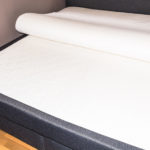
America is one of the most surveilled nations on Earth.
And according to this article, we don’t even know it!
Americans underestimate how often they’re caught on camera by a factor of 10x the actual figure! Clearly, we’re all videoed far more than we realize.
How can this be? Well, hidden cameras are one way sure-fire way to snap footage without people realizing.
Whether for extra security at home, or for keeping an eye on your child’s nanny, or to do some private investigation, hidden cameras help.
But there are lots of options on the market, and it can be hard to know which to choose!
If you’re hoping to do some of your own undercover surveilling, keep reading to learn how to pick the best-hidden camera for your needs.
Here are 10 tips for choosing the right hidden camera for you.
1. Find a Camera That Won’t Stand Out
Make sure the camera you choose will blend into its environment!
You want a camera that’ll effectively ‘disappear,’ wherever you place it. There’s no point having a hidden camera that everyone knows is there, right?
Place your camera somewhere or in something that makes sense for the location. Here are some ideas:
Clock face cameras would be great for your living room.
Alarm clock cameras for your bedroom.
A camera in your air freshener for your bathroom. Or even
A rock-cam (a camera disguised as a rock) for the garden.
A smoke detector camera for offices or commercial properties (effectively killing to birds with one stone regarding functionality!)
This leads to our next tip.
2. Consider the Camera’s Purpose
There are many different types of hidden camera on the market. One for absolutely every purpose imaginable.
Choosing the right one for you will rely heavily on what it is you’re trying to achieve. What are you going to use yours for?
This information will guide you on the specifications you’ll need and the types of disguise to consider.
For instance, do you want a nanny cam to keep an eye on your little one while you’re not home? A camera that’s hidden in a teddy bear, or doll, might be a good bet.
How about a body cam? Maybe you’re trying to film someone when you’re out and about. A buttonhole camera may be best.
And so on and so forth. Think about where your camera will need to go and how it’ll be disguised.
3. Decide On Self-Recording or Wireless Streaming
The most common form of hidden camera is what’s known as a DVR (or digital video recorder).
They’re also the simplest to use and cheapest to buy.
Self-recording DVRs record footage to the device itself and store it internally, on SD cards for example. To playback the footage you then remove the card and insert it into a computer or other device.
Wireless hidden cameras are newer regarding the technology and, as the name suggests, run through the Wifi in your property. The benefit of this is that you can get a live stream sent directly to your device (phone/tablet/computer etc.) anywhere in the world.
There are a couple of cons though. Firstly, there’s been recent issues with hacking. People can literally hack into your camera and view the footage for themselves.
Secondly, the camera is reliant on having a good wifi connection. No wifi, no footage.
4. Decide On Battery or AC Power
Our next tip is to consider the power supply of your camera.
You have two main types of camera to choose from: battery powered or AC (hardwire) powered. It boils down to a decision over portability, flexibility and battery life.
AC is known as hardwired, as it has an actual hardwire connecting it to a power supply. This makes it very reliable, but far harder to disguise. And you’re restricted on where you can place the camera too: no power supply, no camera!
The alternative is a battery powered camera. These have the benefit of being totally flexible in their positioning. They can go anywhere. However, when the battery dies, so does the camera.
This issue can be helped with a motion-sensing camera, which only turns on when it detects movement. In this way, it saves battery life in the interim periods.
It’s possible to get battery powered cameras that last for several days and beyond. However, the larger the battery, the larger the camera. Making it harder to hide.
Top tip: if you want to buy a wifi camera, it’s best to go for an AC power supply. The wifi connection speeds through battery life like no man’s business!
5. Consider Your Storage Space
When selecting your camera, you should also take into consideration the amount of storage space it has.
Hidden cameras tend to utilize either internal storage space or SD cards. Like everything else, there are pros and cons to both.
You can get SD cards of different sizes, giving you the ability to record for longer and then replace the SD card when it’s full. By contrast, internal storage is generally fixed at a set amount.
However, SD cards are susceptible to damage. If you go for this option, be sure to back the footage up elsewhere if you want to keep it.
6. Check If It’ll Work With Your Computer
Apparently, some hidden cameras only work with Windows PCs. Though most cameras are now compatible with any computer, there are still some that won’t work on a Mac.
It’s usually to do with live streaming hidden cams that require particular software to operate. If you’re a Mac user, it’s best to check, just in case, when you buy!
7. Think About the Picture Quality
Like any camera, the resolution of hidden cameras is a factor.
What do you need your camera for? Do you require a high level of detail, such as facial recognition?
You’ll need higher quality footage if so. There are different resolutions available, but high definition is the best.
However, better quality footage means larger file sizes. This means your camera will require a large storage capacity to save the footage.
8. Think About Light Considerations Too
Most cameras will do a good job in well-lit areas. But in low lighting conditions, the worse quality cameras will struggle to maintain image quality.
Where will you be recording? Will you be recording at night? Or in poorly lit areas?
If so, you should think about the camera’s Lux rating. The lower the number for the lux rating, the better quality the camera is in low lighting.
If you require night vision you’ll need a camera with infrared capacity.
9. Think About Audio
Do you want to record audio as well? If so, be sure to learn more about the laws involved.
Essentially, the laws around recording audio are different to video, where audio is far more restricted. You can do it legally in 38 states, without informing the people you’re recording.
But it’s illegal for anyone in California, Connecticut, Delaware, Florida, Hawaii, Illinois, Louisiana, Maryland, Massachusetts, Montana, Nevada, New Hampshire, Oregon, Pennsylvania or Washington.
In these states, you have to tell people if you want to record both audio and video.
10. Consider the Price Tag
Price is a final consideration.
The cost of cameras can vary significantly. But you get what you pay for, with top end cameras requiring a more substantial investment.
Best Hidden Camera – Time to Wrap Up
Hidden cameras can come in handy for all manner of reasons.
But the best hidden camera is one that matches your needs.
It should blend into their environment, be fit for purpose and match your budget. From there it depends on what you’re looking for: wireless or self-recording? Functional in low light? How about storage space and picture quality?
Take into account these things, and you’re sure to find the right hidden camera for your needs.
Now we’d like to hear from you.
What are the primary reasons you wish to buy a hidden camera? Let us know in the comments!
And if you have particular questions or ideas, be sure to contact us here.

